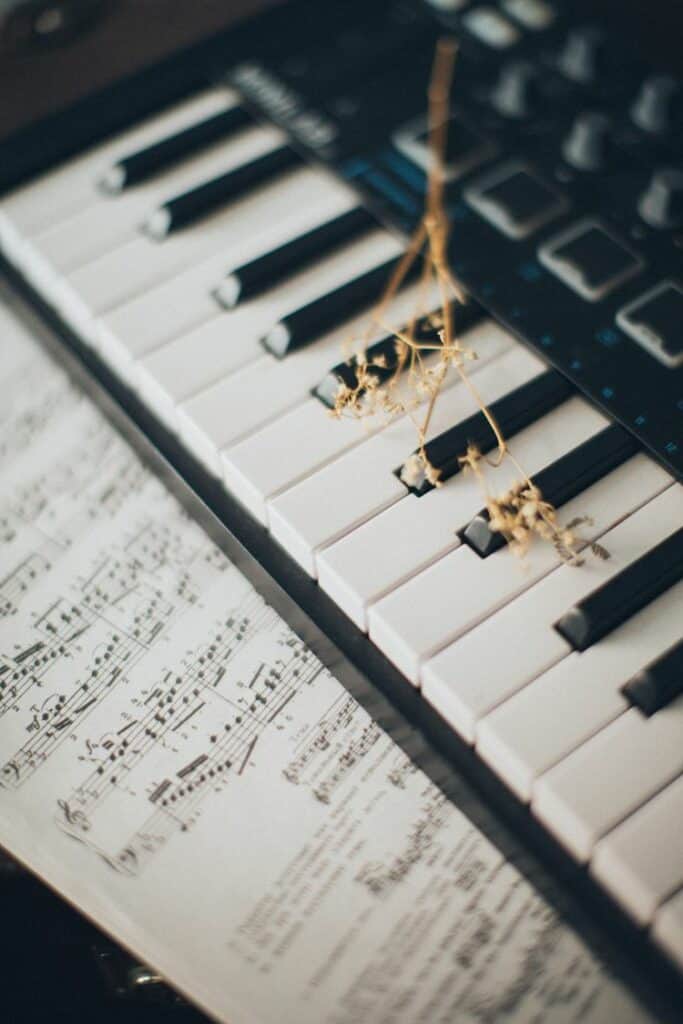Do you love modal jazz but can’t explain what it is? Or do you listen to it and wonder if the musician is just trying a note here and there with no progression? During the late 1950s, modal jazz gained popularity as a counterpoint to static bebop. The emphasis on individuality and new musical approaches would influence rock and other genres of music, as well as jazz in the future.
The emergence of modal jazz is characterized by chords that modulate between different modes instead of maintaining a constant pitch. Modal jazz comes to life when you understand the reason behind the chords. Knowing the soloist’s intention draws you into the music so you can enjoy it even more.
What is Modal Jazz?

Unlike traditional compositions, modal jazz depends heavily on modality rather than notality. Instead of moving from chord to chord quickly, modal jazz stays in one chord for longer. It gives the soloist a lot more options.
For the sake of argument, let’s use the C major scale—CDEFGABC. You can make different chords in the scale: C-major, G-major, F-major. Traditionally, you write harmonies by progressing from C-major to F-major to G-major and so on quickly. It gives music the harmony you hum to when you hear a song.
You can hear quick chord progressions in classical jazz and popular music today. The chord progression is the strategy for writing most music. Modal jazz is different because instead of the soloist using notes to create harmony, they use modes.
So what are modes? Consider the C major scale, which uses all the white keys; you start at C and end at C. But what if, on the same scale, you started at a different point and ended at another place; for example, start at D and end at D. In that case, you will be using the D minor mode (also called the Dorian mode).
Modal music, therefore, would play first the A minor, then the D minor, followed by the F minor, all in the same C major scale. You move from mode to mode within one scale. By using this strategy, you have more options within one chord. Harmonizers have more freedom to create more within one chord.
To be clear, you can still move from chord to chord. It just takes longer, and you have to make it sound like you are on that scale.
Modal Jazz Characteristics
Modal jazz may sound abstract, but it has its defining characteristics.
- Has no strict chord progression written out
- Few chord changes because a single chord can last several bars
- It uses quartal chords instead of 3rd chords
- It uses pedal points, and drones often
- Uses all modes within chords
- Does not use functional harmony
- Allows for improvisation
Modal jazz still has a few rules you have to follow. Even though it doesn’t use functional harmony, it’s still music and should not sound tonic. The rules are:
- Avoid sounding tonal
- Stick to the relevant scale and mode
- You still need a tonal center, so emphasize the root note to make it clear
- Within each mode, highlight the character tone
Listen to Milestones by Miles Davis and Impressions by John Coltrane to feel what modal jazz sounds like. The album Kind of Blue also has some great examples.
Is Modal Jazz Cool Jazz?
Cool jazz arose as an alternative to Bebop. Bebop was fast, loud, high-pitched, high-energy, and dense. Musicians like Miles Davis created cool jazz: soft, light, low-pitched, low energy, and sparse.
Bebop and classical music rely heavily on chord progressions, which are limited. As a result, musicians felt restricted and predictable. They wanted more freedom to create. So they tried making music based on modes rather than chords, and it worked.
Based on that explanation, the difference between Bebop and cool jazz is how you play. As discussed earlier, modal compositions depend heavily on modes within a chord. But it’s generally slower and more lyrical, which aligns more with cool jazz than bop and bebop.
Although the cool jazz of the mid-20th century is not as structured as Bebop, it has more structure than modal jazz, which was born later.
Today, modal jazz can be classified as cool jazz because of the “vibe/style” of playing. You can play jazz “hot” or “cold.” Bebop is hot, while cool jazz is cold. You can hear modal jazz played at Cool Jazz restaurants and events. The slow, lyrical pace gives the audience a relaxing environment.
When you enter Arthur’s Tavern, you are transported to another world, as the smooth sound of cool jazz fills the air. The environment and music (including live performances) are laid back and soothing.
Learn more about Gypsy jazz, how it is different from Modal jazz and the origin of this music genre.